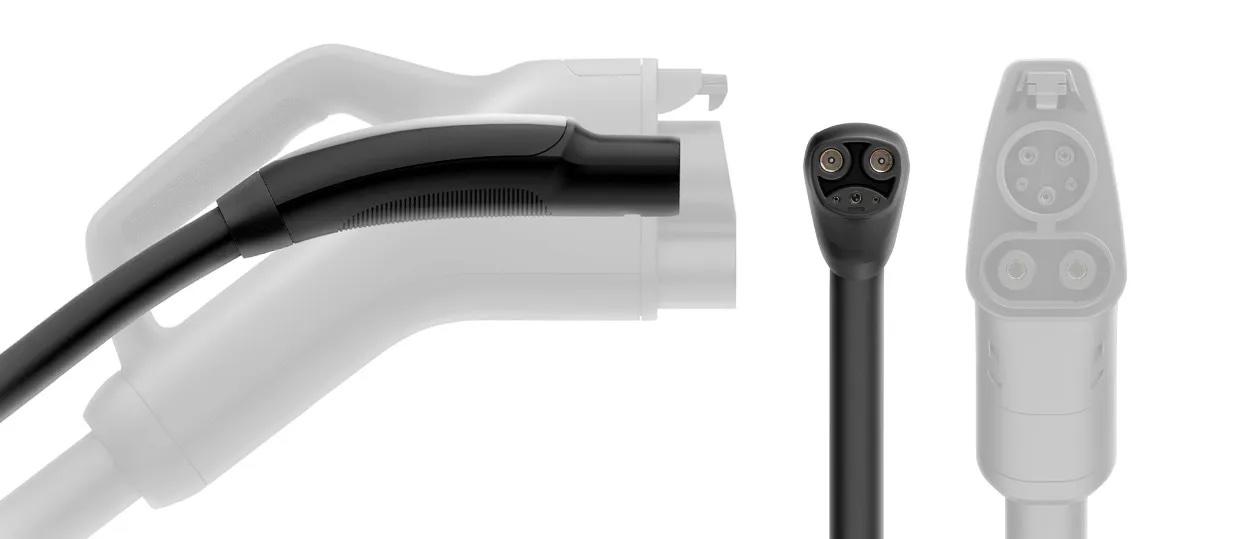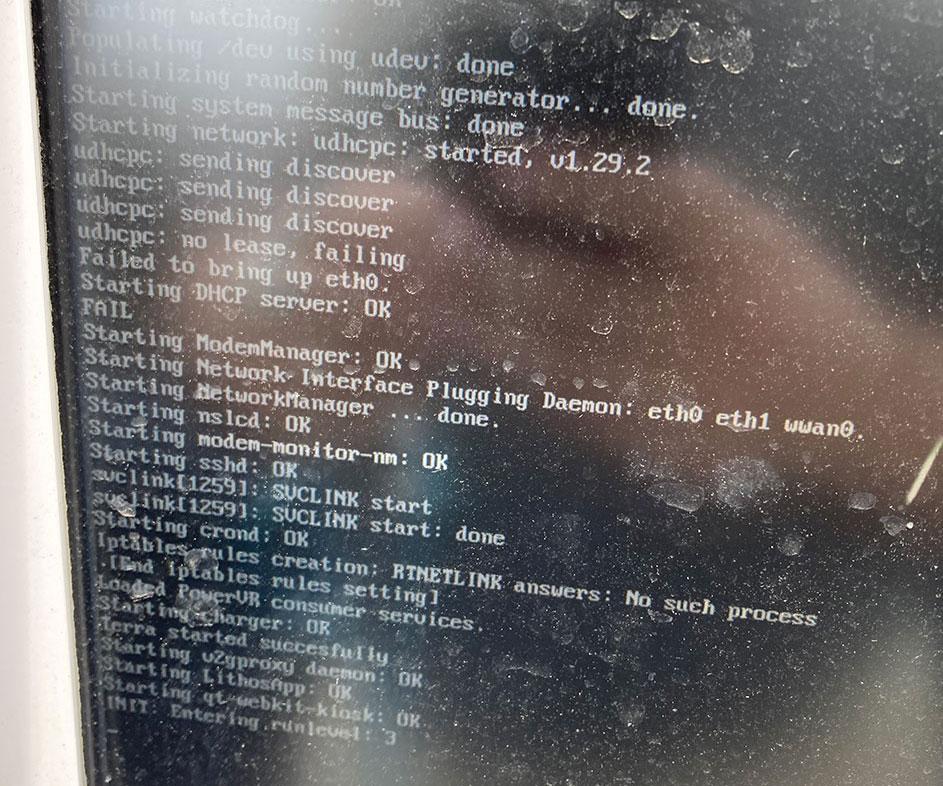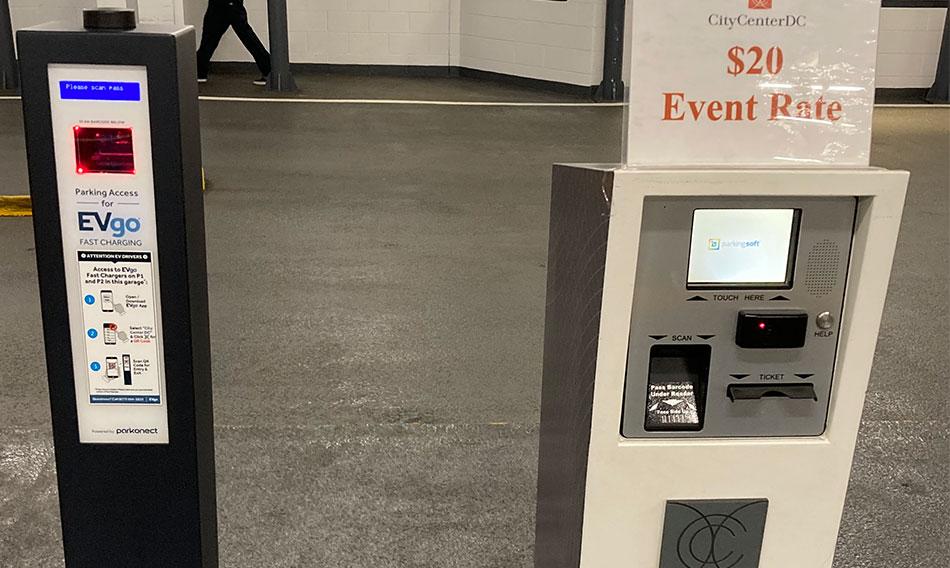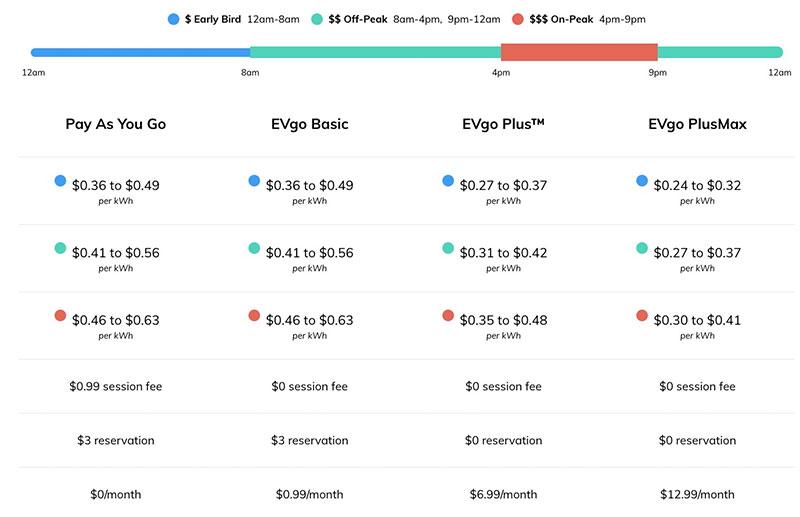Off-Topic: A year later, the EV fast charging landscape has improved, but not much.
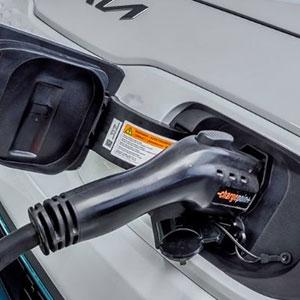
Last year I went pretty off-topic with a lengthy, in-the-weeds post about my experience shopping for, buying and driving an electric vehicle for the first time which received a decent level of attention.
I didn't actually get around to writing up the post until June, but I actually bought the car, a 2022 Kia Niro EV, in early March 2022. My write-up included my experience taking a road trip from my home in a suburb north of Detroit, Michigan to Washington, DC and back.
Well, it's 16 months later, I've driven over 10,000 miles in the new car, and I just got back from another road trip to DC & back.
As I noted in my last update from March of this year, the EV industry and market have both gone through some tumultuous changes since I first bought my car, including (but not limited to):
- Finally clearing up lingering global supply chain issues from the COVID pandemic
- General Motors cleaning up their Chevy Bolt battery recall debacle
- Russia's invasion of Ukraine, which caused gas prices to surge nationally (and globally) over the summer before dropping again last fall
- Passage of the Bipartisan Infrastructure Bill, which includes $7.5B to build out a nationwide network of 500,000 EV charging stations
- Passage of the Inflation Reduction Act, which completely overhauled how the U.S. EV tax credit program works (including which vehicles qualify)
- Elon Musk's very public descent into increasingly bizarre behavior, mostly centered around his absurd $44 billion purchase of Twitter (heavily funded via Tesla stock)
In addition, since March of this year, another major development has been major U.S. EV automakers including Ford, General Motors, Mercedes, Nissan, Polestar, Rivian and Volvo announcing that they've decided to settle on Tesla's DC fast charger connector standard, known as the North American Charging Standard (NACS) starting within the next year or so (while offering NACS/CCS adapters for folks like myself with CCS EVs). This is a big deal for a couple of reasons:
- The NACS connector/cables are much lighter, thinner and less bulky than the "CCS" (Combined Charging System) connectors
- It's also supposed to mean that Tesla's much-praised SuperCharger fast charging network will be opened up to non-Tesla EVs.
To give you an idea of how dramatically lighter/thinner the Tesla fast charger is, here's a visual comparison (the greyed out images are CCS, of course):
Unfortunately, moving to the NACS cable/connector in and of itself only solves a couple of EV infrastructure problems. While this will make it physically much easier to handle and plug/unplug fast charging cables in the coming years, the NACS chargers are apparently still going to utilize the CCS back-end charging/payment software being used by non-Tesla charging networks such as Electrify America, EVgo, Blink, Shell ReCharge and so on. And that's where most of the real headaches in fast charging can be found.
On our road trip to and from DC last week, I made a total of 11 recharging stops (5 each way, plus one more when we arrived at our destination).
This may seem like an awful lot of stops for an 1,100-mile round trip, but that's where the fast charging infrastructure headaches come into play.
According to the EPA, the Kia Niro EV gets around 239 miles per full charge (from 100% - 0%). On paper, that makes it look like I should only have had to recharge a total of 4 times: Twice on the way there, twice on the way home, right?
The first problem with this is that, of course, you never run it down to empty just as you should never run a gasoline-powered car dry either. It's generally recommended to charge the battery when you reach around 20% capacity, though you can go as low as 10% in a pinch.
In addition, you're also not supposed to charge an EV battery to more than 80% when using fast charging because a) the charging rate slows to a crawl at that level, and b) it supposedly damages the battery if done too frequently.
That effectively gives me perhaps 70% of the official range capacity to work with, or perhaps 170 miles at a time at most.
Of course, that 239 mile range is an average...just like a gas-powered car, it can vary widely depending on the temperature outside, how fast you're driving, what type of terrain you're driving on, whether you're driving on an incline up or down, whether you're running the heat or air conditioning and so forth. As far as I can tell, I could theoretically squeeze up to 600 miles out of a single charge (enough to get all the way to DC)...but that would require driving 25 mph the entire distance on a flat surface and so on.
That's obviously not practical, though I should be able to get up to ~300 miles or so out of it in nice weather if I keep the AC off and the speed below 60 or so...or perhaps ~200 miles or so of real-world range between charges. So...I should be able to charge a total of 5-6 times, right?
This brings me to the next problem: Fast charger locations and, perhaps more importantly, reliability. The spacing of EV fast chargers isn't really a problem between Detroit and DC--they're available every 50 - 150 miles apart or so along the entire stretch--but the reliability is a major headache for every network other than Tesla (which has a very high reliability reputation).
It doesn't do any good to roll into a fast charging station with 10% capacity left if that station isn't working for whatever reason.
Gas stations are not only ubiquitous throughout most of the United States (aside from the "Last Gas for 100 Miles" areas of Wyoming, the Dakotas, etc), but they're also generally reliable--that is, if a gas station has 8 pumps, the odds are pretty high that 7 of them will be working at any given time. Gas stations are also easy to spot--in addition to the official freeway road signs with the gas pump icon, they generally have a large roof/awning and a big sign with the price per gallon displayed in large numbers.
In addition, gas station pumps generally all have the same connectors and work pretty much the same way (aside from diesel pumps, which are slightly wider to prevent you from accidentally plugging them into your gasoline tank by mistake)...and paying for gasoline at a gas station is pretty straightforward: You swipe/insert your credit card, it verifies your credentials within a moment, you remove the nozzle, fill your tank, your credit card is charged, you take a receipt and off you go. You might use Apple Pay or Google Pay or whatever, or perhaps you pay cash to the attendant inside the gas station.
With EV fast chargers, however, it's a whole different story on all of the above:
- Instead of a dedicated "EV charge station" with an attendant, in many/most cases the charging stations are just sort of plopped down at the front of a couple of random parking spots. There's usually no awning or sign. Oftentimes they're located wayyyy in the back or next to a dumpster or whatever, turning the entire experience of even finding the stations into a game of "Where's Waldo?"
- There usually isn't a human being there to resolve any charging issues--even if located next to a gas station, convenience store or whatever, forget about the attendant having any knowledge of or control over the EV charging stations.
- Pretty much all of the charging networks are supposed to work with either the network's app, a credit card, Apple Pay/etc for payments...but sometimes the credit card swiper doesn't work, or the app doesn't connect (possibly due to a poor 3G connection). Networks like EVgo put a temporary $5 charge on your card every time you use it (canceled later on), which isn't too unreasonable, while Electrify America places a $50 temporary charge authorization hold every time, which is absurd.
- In two cases only 2-3 of the 8 stations were working. In one case (an Electrify America charger in a WalMart parking lot), the charging session started out fine...but then the session abruptly stopped as all 8 units experienced a kernal panic and had to reboot. I ended up having to call customer service, where they eventually agreed not to charge me anything for the partial session (and cancelled the $50 hold). This means I technically got around 12 kWh of electricity for free...but that didn't change the fact that I was only up to ~60% when I needed to get to 80%. Fortunately, there was another location about 20 miles away...in this instance.
- Apparently there's also been major problems with people vandalizing EV charging units. This is a Blink charger in a Whole Foods parking lot. I don't know if this was random vandalization or if it's some sort of MAGA/"anti-WOKE" garbage in the same vein as the "rolling coal" idiocy, but regardless, it meant this station was out of commission (fortunately there was a brand-new EVgo fast charger station nearby as well).
The 6th recharge (the one after we actually arrived in downtown DC) was a whole other story in & of itself. The EVgo charging units were located inside a private parking garage. At first I thought I was gonna have to shell out a whopping $20 just to get into the garage to even begin charging the battery, but it turns out EVgo has an arrangement with the garage--they have their own little card scanner just before the normal parking garage ticket station. You bring up your EVgo app and it gives you 2 hours of free parking, which should be plenty of time to fully recharge the battery to 80%.
It's not a bad system, though it was a bit confusing at first. Also, the actual charging units are only capable of delivering 50 kW, which is pretty slow these days (my Niro can handle up to 75 kW, and most EV fast charging units can deliver either 150 or 350 kW these days). Still, at least it was indoors; it wasn't too terrible an experience for me.
The same can't be said for the elderly couple who pulled in next to me with a brand-new Tesla, however. The good news is that just as Tesla is starting to open up their SuperChargers to non-Tesla vehicles, EVgo (and possibly some other EV charging networks) have also started adding Tesla (NACS) connectors to theirs, which meant that yes, this couple was able to charge their battery there.
The bad news is that:
- They didn't see the EVgo card scanner, which meant they paid the $20 to get into the garage. Ouch.
- They didn't already have an EVgo account/app/card anyway, so they had to download it & set up an account to even use the charger
- Once they did get it working, for some reason it only charged their Tesla battery at a slow-poke 18kW rate...and that was when the battery was only at around 40% charged, so it should have been charging at pretty close to the 50 kW maximum rate.
- This means they would have had to sit there for over 2 hours to fully recharge their Tesla.
I helped them out by explaining all of the terminology, rates, protocols etc. to them as best I could (including recommending they drop the maximum charge threshold down to 80%). It's not like I had anything else to do for the ~40 minutes or so that I was there.
In the end, out of the 11 fast charging sessions I went through on our trip, 7 of them went through properly on the first try (that is, I pulled up, used the first connector I tried, it connected properly, the payment went through properly, the charging session completed with no incident, I disconnected and was on my way without issue). But this is exactly why I try to space my road trip charging sessions out every ~90 - 100 miles instead of the ~200 miles I could theoretically go with...because you never know whether you'll have to look for an alternate stop instead.
As an aside, there's also a lot of confusion regarding pricing. With gas stations, the price per gallon may vary by station, brand and/or octane level...but it's always a flat price per gallon, plus whatever taxes are included. Here in Michigan, gas prices currently range from around $3.50/gallon to around $5.30/gallon...a 1.5:1 range.
With EV fast charging, it's all over the place:
- Some networks charge per kilowatt-hour (kWh); some charge per minute.
- Some charge different rates depending on the time of day.
- Some charge one kWh rate for the first (X) kilowatt-hours but a different rate for anything over that.
- Some charge an additional "per session" fee.
- Some charge an "idle fee" after your session ends (to prevent you from hogging the station when you're done).
- Most networks have their own "tiered membership" plans which can be confusing as hell.
For instance, here's EVgo's pricing for their different plans. Clear as mud, eh? (They even have a "reservation fee" for some plans, which I'm guessing is only necessary in areas like San Francisco where there are tons of EVs on the road). And these rates differ by region as well!
Last week I paid as little as $0.21/kWh at one location but $0.62/kWh at another. That's a 3:1 price range with some extra charges thrown in here and there depending on the network and station.
For comparison, when I charge at home (about 95% of the year), DTE charges roughly $0.18/kWh with all the fees and taxes included.
Overall, I ended up paying around $0.44/kWh on average for roughly 260 kWh of electricity via fast charging (I used another ~80 kWh which was generated via regenerative braking). This amounts to roughly $0.10/mile. For comparison, a gasoline car getting 30 mpg at $3.75/gallon would have cost around $0.13/mile, so it was still less expensive even with some grossly inflated rates for some of the stations.
If I was calling the shots:
- First, require all pricing to be per kilowatt-hour. Imagine if a gas station charged you by the minute instead of by the gallon...and then replaced the nozzle with a metal straw once you got to 3/4ths of a tank?
- Second, no varying rates by time of day. Yes, I know utilities do this to discourage peak hour use, but when you're on a road trip and need to recharge, you have no choice about what time of day to do so. At home, I can usually wait until after 9pm or whenever to plug my car in, but when I'm on a road trip I don't have the option of twiddling my thumbs for 5 hours to save $0.20/kWh.
- Third, eliminate session fees. Imagine having to pay a buck or two to even put a gas station nozzle into your car?
- Fourth, standardize on an idle fee as well as the grace period before it kicks in ($0.50/minute after 10 minutes seems reasonable to me).
- I can't really comment on the "reservation fee" since that's a creature of areas with high volumes of EV ownership only; it might be necessary to prevent hogging and long lines.
In addition, I need to reiterate my earlier point about nearly every EV charging station (including many Tesla stations): No protection from rain, snow or wind, and no signage visible from more than ~100 feet away.
Unlike gas pumps, which are almost always located under a large, sturdy roof/awning which protects both the pump, car and driver from the elements while filling your tank, most EV stations seem to be installed like parking meters: They're sticking out in the middle of a parking lot without any sort of awning or wind shield around them. Not only does this mean that you have to deal with the charging session & plugging / unplugging the cable in the rain/snow, you also have to worry about whether you can even reach the station after a heavy snowfall.
This can be a major concern if you have to use one after a major snowstorm. In large parking lots, snow plows tend to pile up huge hills of snow at the "endcap" sections of each row of parking spots, which is exactly where most EV parking spots are located.
It seems to me that at the very least EV chargers should have some sort of basic "bus stop-style" shelter with an awning sticking out a few feet.
Anyway...I'm back.
UPDATE: By request, here's the latest cumulative charging statistics for my Kia Niro EV and how it would compare to a conventional internal combustion engine.
In short, I've spent around $585 on electricity so far, including $360 via residential charging at home and $225 via public fast charging stations. Over 30% of the electricity has been generated via regenerative braking. The overall average cost has worked out to about 5.6¢ per mile.
By comparison, a conventional ICE vehicle would have used anywhere from $910 - $1,470 in gasoline so far, depending on it's mileage (I'm using 30, 35 or 40 MPG) and the price of gas (anywhere from $3.50 - $4.25/gallon). At the moment, here in Michigan gas prices average around $3.64/gallon, and it's $3.68/gallon nationally...but last summer gas shot up to over $5/gallon, so...
Anyway, this works out to between 8.9 - 14.2¢ per mile, or 1.6x - 2.5x as much.
P.S. I should also note that the 15¢ per kWh average is actually 22¢ on average if you disregard regenerative braking which is, of course, free.



